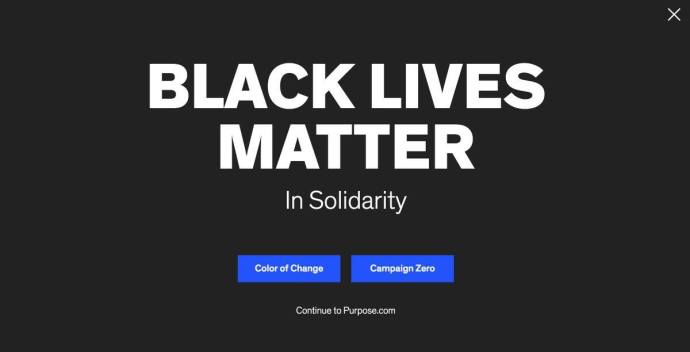Aug 10
20180
ExxonMobil strikes US$200 billion offshore oil reserves in Guyana. Gives US$10 million to Conservation International
August 7, 2018
ExxonMobil isn’t just any oil and gas company. It’s the world’s biggest. And it has played a key role in promoting climate science denial.
A 2015 investigation by Inside Climate News revealed that Exxon knew for decades that burning fossil fuels causes climate change.
In July 1977, a senior company scientist at Exxon called James Black spoke at a meeting in Exxon’s headquarters. He told them that,
“In the first place, there is general scientific agreement that the most likely manner in which mankind is influencing the global climate is through carbon dioxide release from the burning of fossil fuels.”
Climate denial
But Exxon’s response was not to stop profiting from oil. The company spent decades refusing to acknowledge publicly the role of fossil fuels in climate change. Exxon expanded to become ExxonMobil, the world’s biggest oil and gas corporation.
Exxon funded climate denial organisations, such as the Global Climate Coalition, which argued nonsense such as, “The role of greenhouse gases in climate change is not well understood.”
Today, ExxonMobil states on its website that,
The risk of climate change is clear and the risk warrants action. Increasing carbon emissions in the atmosphere are having a warming effect. There is a broad scientific and policy consensus that action must be taken to further quantify and assess the risks.
At least ExxonMobil now admits that increasing carbon emissions are causing climate change. Obviously though, it is still a step too far for ExxonMobil to admit that action must be taken to dramatically reduce emissions from burning fossil fuels, rather than just to “further quantify and assess the risks”. And ExxonMobil is still funding climate science deniers.
While ExxonMobil may have adjusted its rhetoric slightly on climate change in recent years, its actual policy remains the same: Drill as much oil and gas as possible, as quickly as possible.
Massive oil find in Guyana
Since 2015, ExxonMobil has drilled 10 exploration wells in the Stabroek exploration area off the coast of Guyana, 8 of which have struck oil. The company has identified a further 19 exploration wells to drill and estimates that Stabroek holds at least 4 billion barrels of oil. That could be worth more than US$200 billion.
Neil Chapman, senior Vice-President at ExxonMobil, describes the oil discovery in Guyana as a “fairy tale”.
Conservation International’s green PR
Conservation International doesn’t care about ExxonMobil’s record of climate denial, or about its ongoing contribution to climate change. Last month, Conservation International and the University of Guyana accepted US$10 million from ExxonMobil Foundation.
The money will be given over a five year period and is “to train Guyanese for sustainable job opportunities and to expand community-supported conservation”.
A press release from ExxonMobil explains that,
The investment is also intended to support Guyana’s Green State Development Plan, the country’s 15-year development plan that aims, among other things, to diversify Guyana’s economy and balance economic growth with the sustainable management and conservation of the country’s ecosystems.
None of this should come as a surprise. Conservation International has a list of “corporate partners” that includes representatives of some of the most polluting companies on the planet.
The money from ExxonMobil shows that there is no corporate polluter too dirty for Conservation International. The reality is that Conservation International is not much more than a green PR company.
Oil money and REDD
Conservation International is closely involved in developing REDD in Guyana. In 2009, Conservation International helped set up and fund a REDD Secretariat within the Guyana Forest Commission. According to Global Canopy’s REDD desk website, Conservation International was “closely involved with the development of the Low Carbon Development Strategy and the Readiness Preparation Proposal.”
This cosy relationship between a so-called environmental organisation and the world’s biggest oil and gas corporation is typical of REDD. Conservation International has long been in favour of allowing the oil industry to continue polluting while generating carbon credits to “offset” the greenhouse gas emissions.
ExxonMobil’s massive oil discovery in Guyana helps guarantee that climate change will continue to get worse, putting forests everywhere at increasing risk of going up in smoke as the climate warms and rainfall becomes erratic.
Meanwhile, in July 2018, Norway announced that it would release the remaining US$135 million of the Norway-Guyana US$250 million REDD deal. This is despite the fact that the deal expired in 2015, and the fact that since the REDD deal was signed in 2009, Guyana has made absolutely no attempt whatsoever to reduce emissions from deforestation and forest degradation in the country. Gold mining and destructive logging has continued just as it did before the REDD deal.
In late 2017, Per Fredrik Pharo, the director of the Norwegian International Climate and Forest Initiative, told the Stabroek News that in order to get the remaining money under the REDD deal,
“Guyana needs to establish a credible pathway to a clean and renewable energy transition in line with its NDC [Nationally Determined Contributions] and our original agreement.”
Obviously four billion barrels of oil makes talk of a “clean and renewable energy transition” sound like a bit of a joke. But Guyana promised to build a 100 MW solar farm and Norway agreed to release the money.
Norway’s riches come from the country’s oil industry. And Norway has no interest in reducing emissions from burning fossil fuels. When Earth Island Journal asked Pharo about ExxonMobil’s offshore oil drilling, Pharo replied, “It would be bordering on the hypocritical if we told them not to develop their oil resources.”





































































